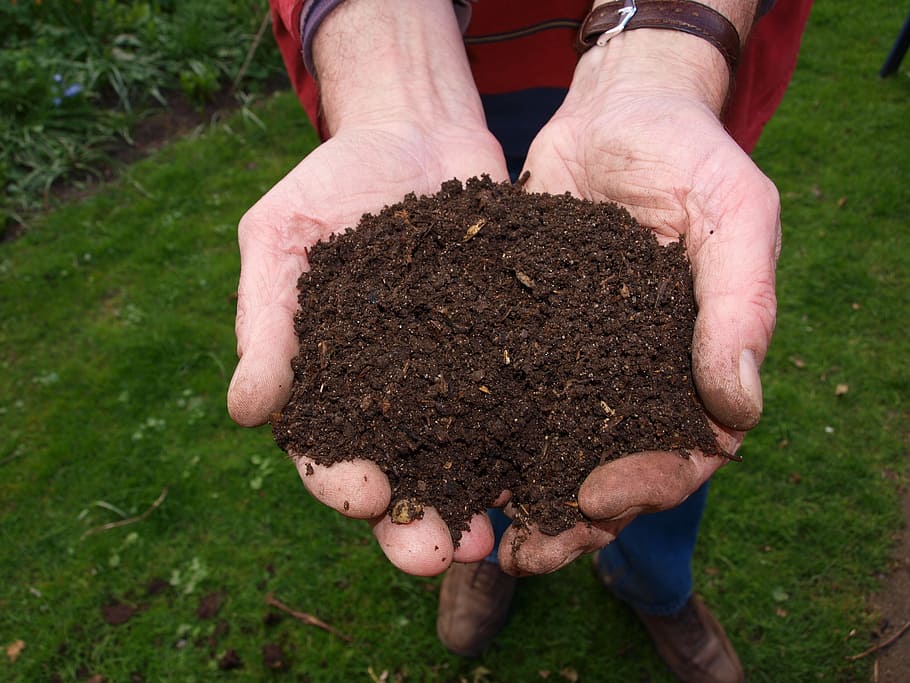Photo Credit: Wallpaper Flare
When planting beautiful wildflowers, preparation is your key to success! While many wildflower species fare well in marginal soils with low fertility, they will perform best in well-worked, amended, and well-draining soil. If you’re sowing a garden bed of 100 square feet or a full acre, the more time you put into prepping the soil, the better wildflower meadow you’ll have.
So, let’s talk about how to get the best soil for your soon-to-be-planted wildflower meadow!
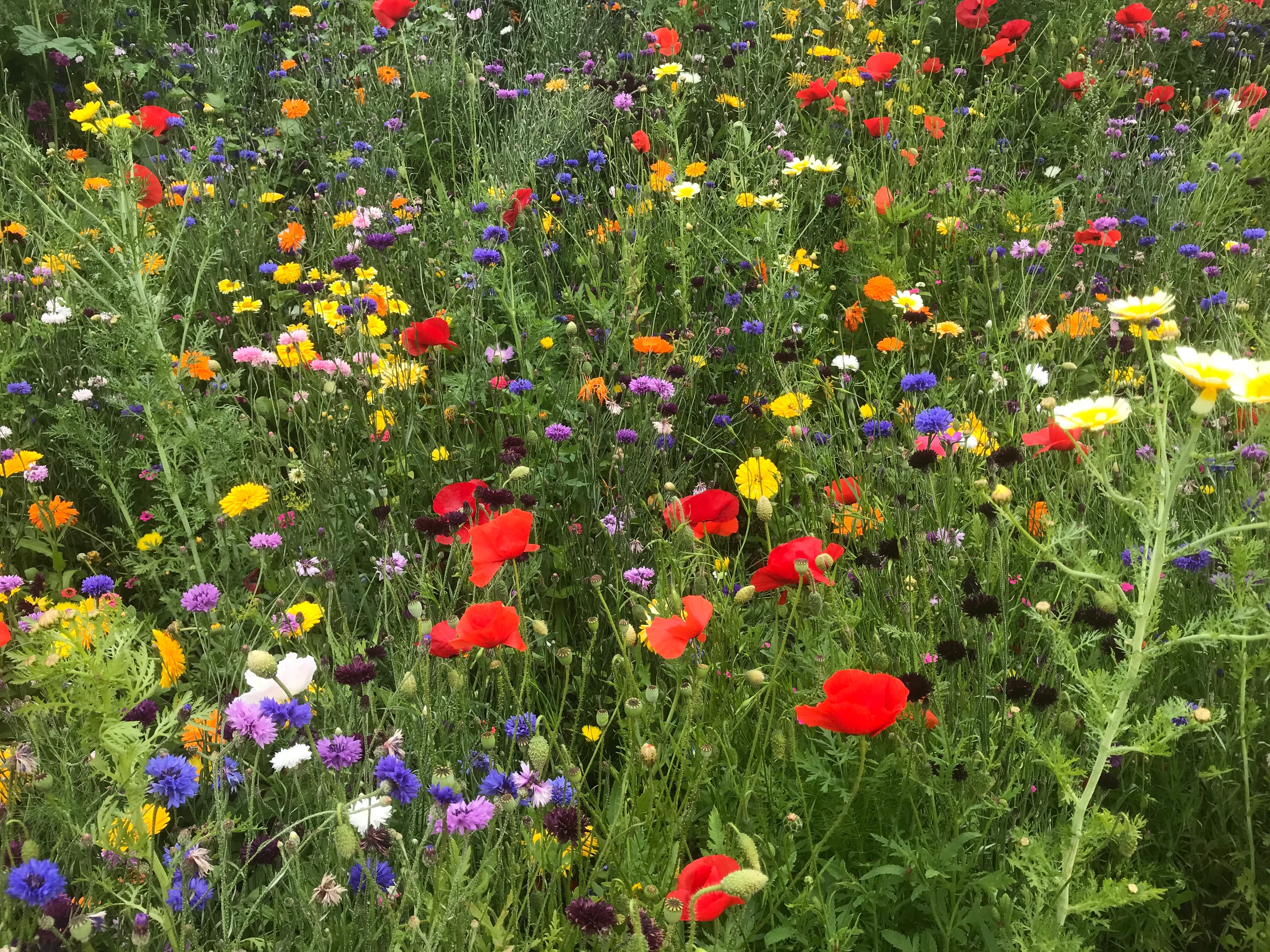 Photo credit: Photo by Leslie Bowman on Unsplash
Photo credit: Photo by Leslie Bowman on Unsplash
Run a Soil Analysis
Suppose you’ve been following the Deer Creek Seed blog articles (especially the homesteading guides). In that case, you’ve likely noticed we frequently mention how important it is to do soil testing before planting. The reason for this is simple—soil tests are the ONLY way to know what’s happening in the ground. Without a soil test, you won’t know if you need to lime or add fertilizer and how much to add if it does need amending.
For growing wildflowers, we recommend, at a minimum, you analyze for soil pH, nitrogen (N), phosphorus (P), and potassium (K). You can sample the soil and send it to a local testing lab or simplify the process and purchase one of our lawn and garden soil test kits.
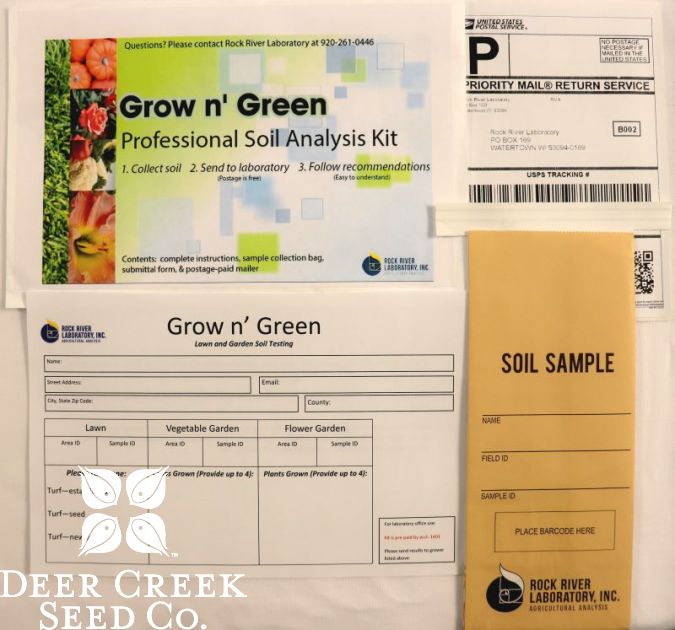
The results will tell you if your soil is too acidic and needs to be adjusted, if it’s not acidic enough and needs lime, or if the pH is within a reasonable range. You’ll also find out the nutrient concentration levels, and the lab typically recommends how much fertilizer to apply.
Get Rid of Weeds
Before focusing on the soil, it’s essential to take some time and get rid of all the pesky weeds growing in your planting area. There are times weeds are helpful. Say, for instance, when a site is left fallow. In that case, the weeds will help minimize soil erosion.
But if you’re going to plant, you don’t want weed seeds or established weeds competing with your plants for sunlight, water, and nutrients. It may be tempting to turn to chemical weed and grass killers; however, there are many sustainable ways to eradicate weeds that are much safer for beneficial soil microorganisms and the environment.
Weed Control Through Solarization and Smothering
Both of these control methods aim to kill weeds by laying materials or sheeting over the ground. They are easy to do and work for small or large planting areas.
Solarization takes advantage of the sun’s rays and takes about 4 to 8 weeks to work. To solarize an area, lay clear plastic down over the ground. The sun shines down on it, and excessive heat and moisture are trapped underneath. This heat kills any existing plant life over time. If, by chance, some weed seeds germinate, they won’t survive the prolonged temperature.
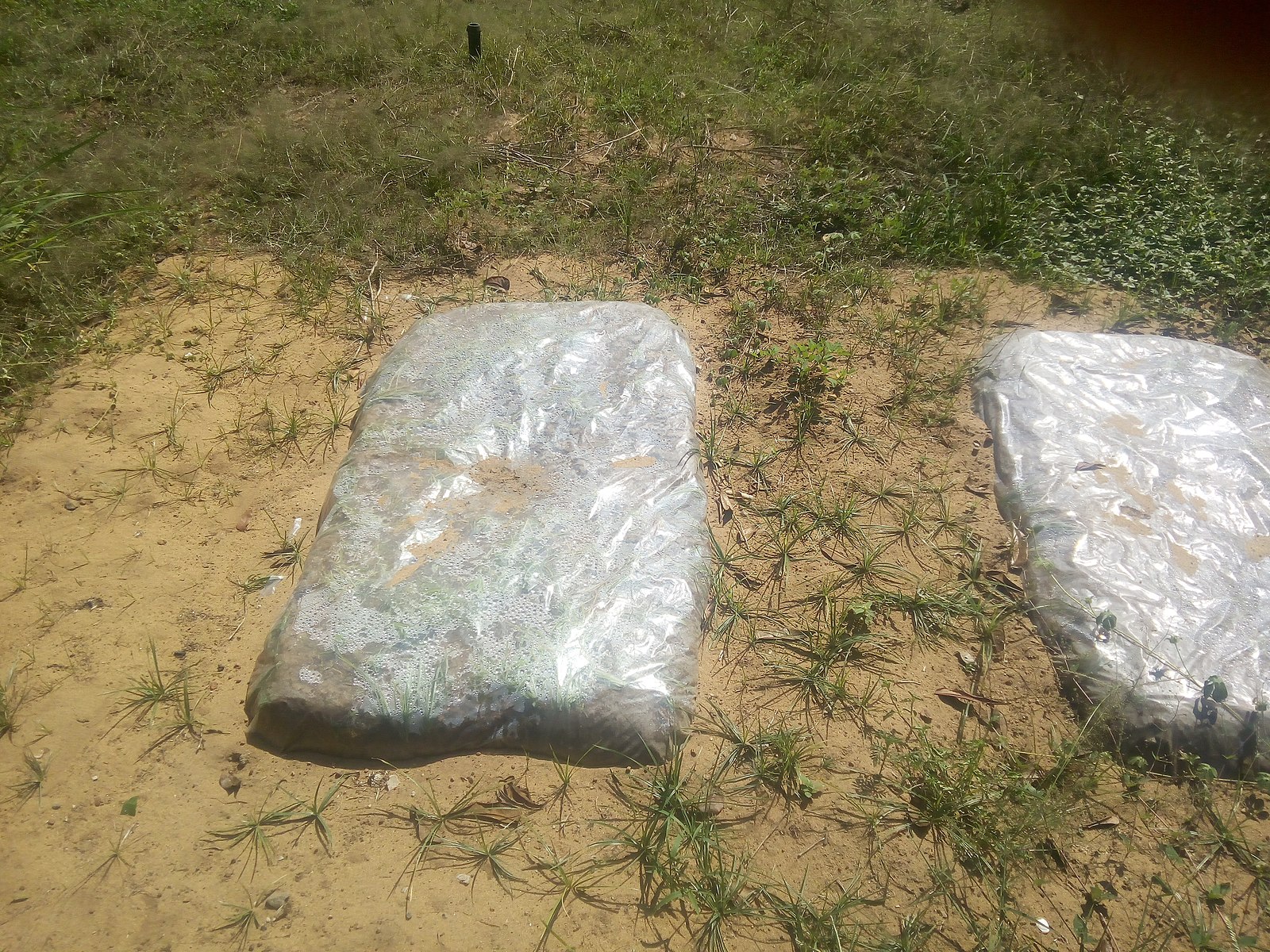 Photo Credit: Wikimedia Commons
Photo Credit: Wikimedia Commons
Smothering uses a different principle than solarization but takes the same 4 to 8 weeks. With smothering, you lay cardboard, layers of newspapers, black plastic, heavy tarps, or even blankets over the soil. The lack of sunlight prevents many seeds from germinating and stops plants from growing. It also creates the ideal environment for soil microbes and earthworms to break down plant material and loosen the soil.
Steps For Building Up Your Soil
After getting your soil test results back and knocking out the weeds, it’s time to focus on prepping the planting bed.
You’ll want to work the ground about 8 to 12 Inches down to help break up any hardpans or soil clods. You can do it by hand but, a tiller will help tremendously if you’re working a larger area. Ideally, you’ll want to work the soil once to begin loosening it, add any amendments, and then work it a second time to incorporate everything.
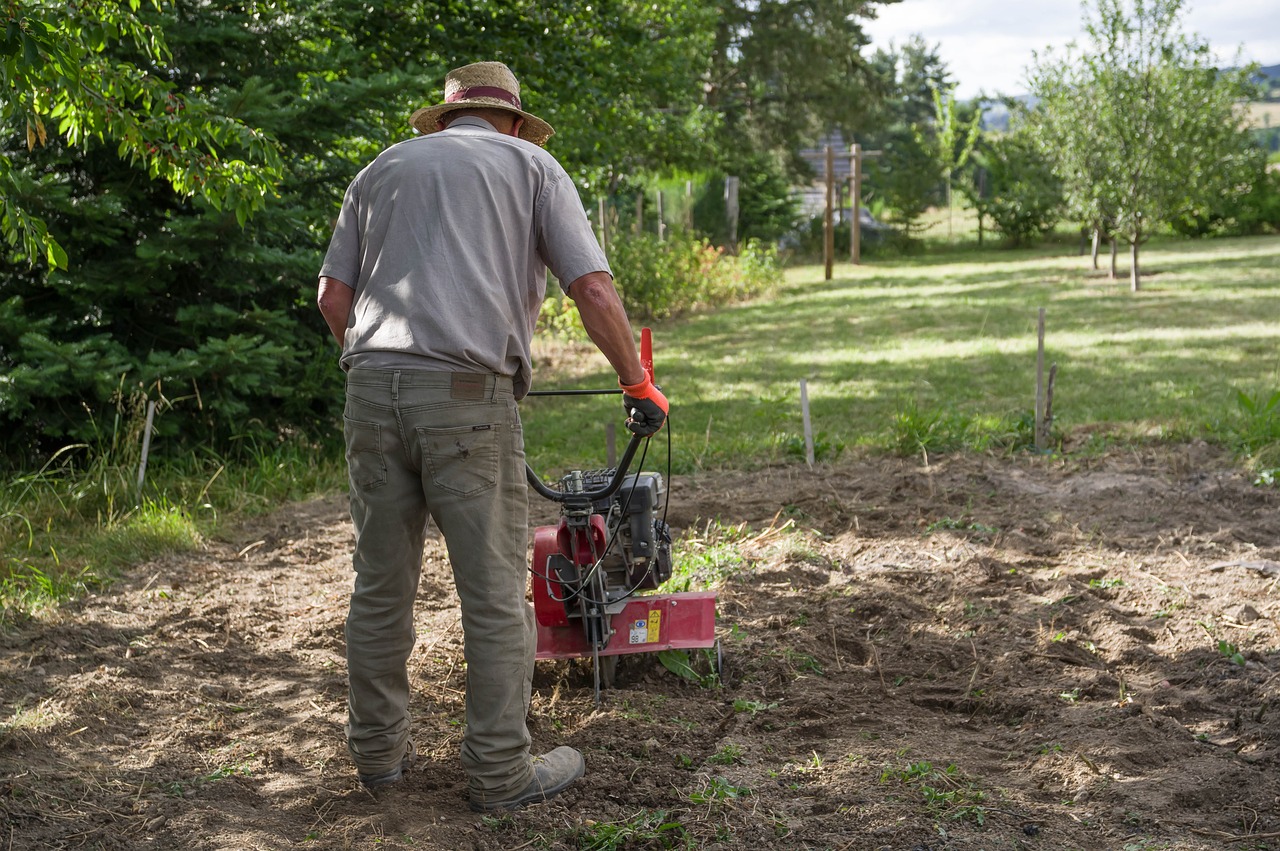 Photo Credit: jacqueline_macou | Pixabay
Photo Credit: jacqueline_macou | Pixabay
There’s a fine line you walk when it comes to tillage. Proper tillage aerates the soil and helps to break up any compaction, which increases biological activity to promote the breakdown of soil organic matter. But too much tillage can stir up weed seeds from far below the surface and contributes to soil erosion.
After working the soil once, we recommend building it up and improving its long-term health.
- Add organic matter. Spread 2 to 3 Inches of finished compost or well-rotted manure across the planting bed to improve soil structure, nutrient retention, drainage, and water infiltration. Over time, decomposition of the organic matter will add more nutrients to the soil.
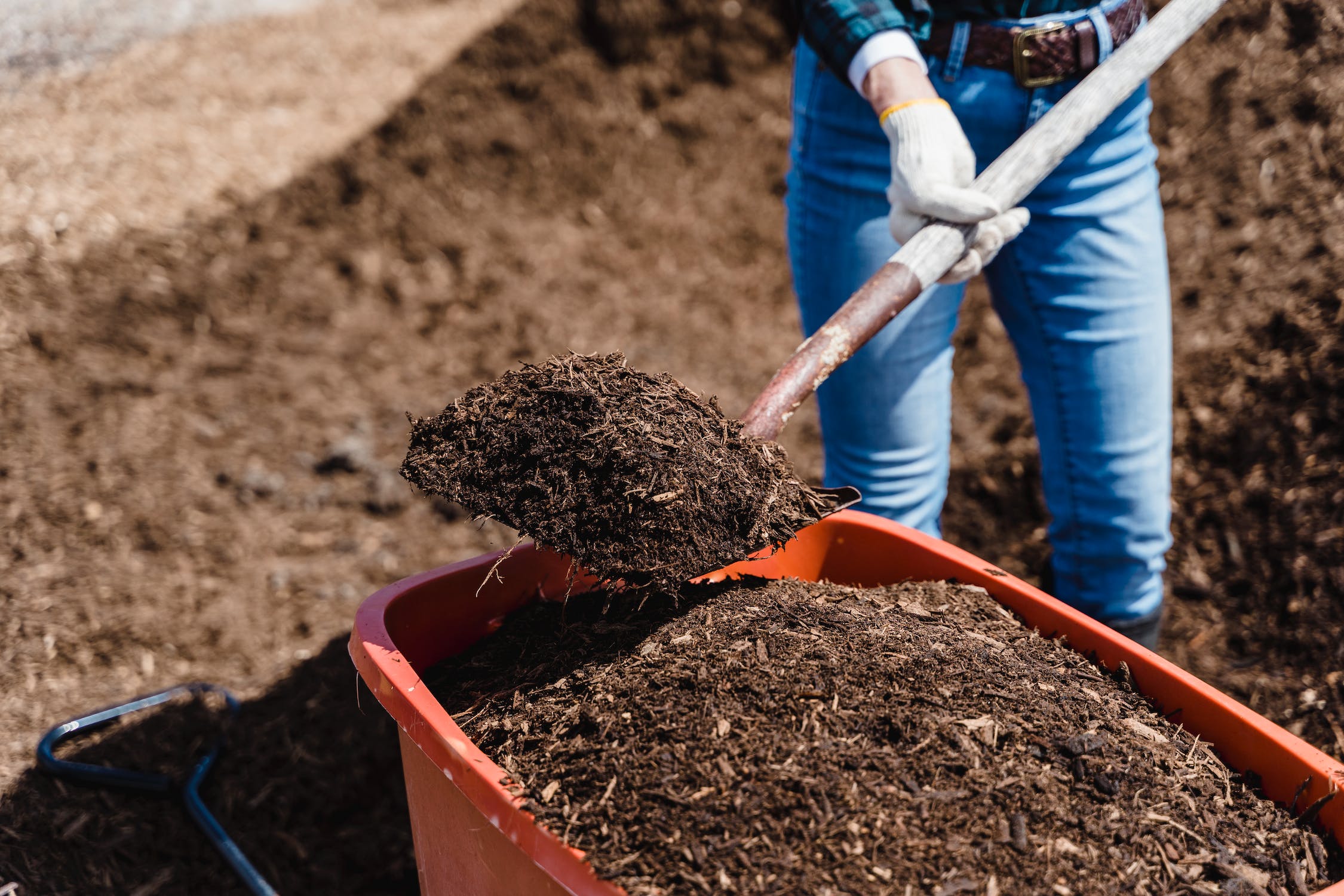 Photo Credit: Pexels
Photo Credit: Pexels
- Add nutrients. Based on your soil test results, add the appropriate amount of fertilizer to improve your soil’s fertility. A good fertilizer choice is an organic or synthetic slow-release product containing micronutrients.
 Photo Credit: Jüri Grinko | Pixabay
Photo Credit: Jüri Grinko | Pixabay
- Add beneficial bacterial and soil mycorrhizae. You can also add soil inoculants to help stimulate plant growth and fix nitrogen in the ground. These microorganisms will also improve plant nutrient and water uptake.
How to Plant Wildflower Seeds
Wildflowers are a fantastic way to cover a large area, and they don’t need to be placed meticulously since they are intended to look like a natural planting. Spring planting is recommended, but wait until the frost threat is gone in cold climates.
In all areas, wait until your soil temperatures are at least 55°F, keeping in mind the soil takes longer to warm than the air does. Don’t make the mistake of planting too early when the ground isn’t warm enough.
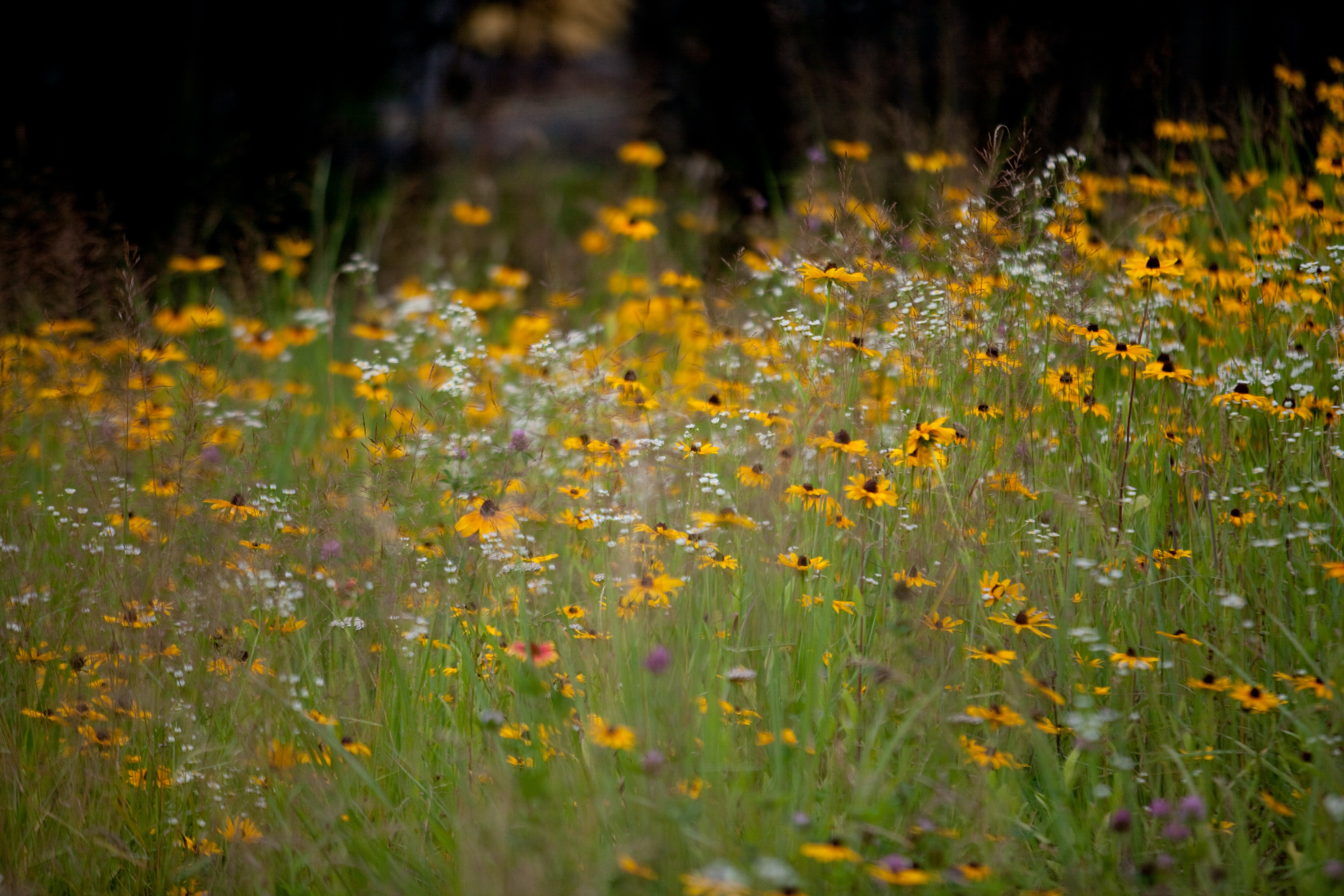 Photo credit: Marcus Neto on Unsplash
Photo credit: Marcus Neto on Unsplash
Sowing wildflower seeds is straightforward and similar to overseeding your lawn.
- Mix one part seed with about eight parts of sand in a bucket. Combining your seeds with sand helps you spread the seeds more uniformly and shows you where you’ve already sown seed.
- Split the seed and sand mixture into two equal parts, and scatter it as evenly as possible, walking back and forth across the planting bed in a north-to-south (and vice versa) pattern. Take the second half and sow the seeds similarly, walking east-to-west (and vice versa) to thoroughly cover the area.
- Walk across the ground or gently press the wildflower seeds into the ground using a soil roller. You don’t need to bury them but want good seed-to-soil contact. If you live in a windy region or are planting on a slope, you can cover the bed with straw to help keep seeds in place.
- Keep the soil slightly damp but not saturated so the seeds stay hydrated. After germination, maintain good soil moisture until your wildflowers are 4 to 6 Inches tall and their roots are long enough to access adequate soil moisture.
Deer Creek Seed Wildflower Mixes
If you aren’t sure what type of wildflowers you’d like to grow, look at our specifically-blended mixes. Each has a specific purpose, from increasing native plant populations and attracting pollinators to beautifying a shade garden spot.
- All Perennial Wildflower Mix provides a colorful blend of perennials that provide a multiyear stand. Most start blooming in the second season, but some plants may flower in the first year.
- Honey Bee & Pollinator Wildflower Mix is packed with nectar-rich annual and perennial species known to attract bumblebees, birds, and butterflies. This season-long food source grows in all US soil types and is neonicotinoid-free.
- Low Grow Wildflower Mix contains a blend of low-growing species that reach only 18-24” tall and have long flowering periods. It is ideal for spots where shorter flowers are best and has approximately 70% annual and 30% perennial flower seeds.
- Midwestern Wildflower Mix contains long-blooming species (about 50% perennial and 50% annual) chosen for their stunning flowers. It tolerates rugged winter conditions and extreme cold.
- North American Shade Wildflower Mix grows well in low light and thrives in garden areas with a mix of sun and shade daily. It contains approximately 55% annuals and 45% perennials.
If you are unsure what wildflower mix is best for your yard or garden, contact Deer Creek Seed’s support staff for help. We want to ensure you’re buying the best of our high-quality seeds to meet your needs!
Additional Resources
- Growing wildflowers is fantastic for local agricultural operations. Go check out the reasons why explained by the Natural Resource Conversation Service.
- Need to know the local frost-free date? Plug your zip code into The Old Farmer’s Almanac’s handy frost date calculator.
- Ready to get rid of your lawn and grow a beautiful wildflower meadow instead? The University of New Hampshire Extension walks you through the process.



